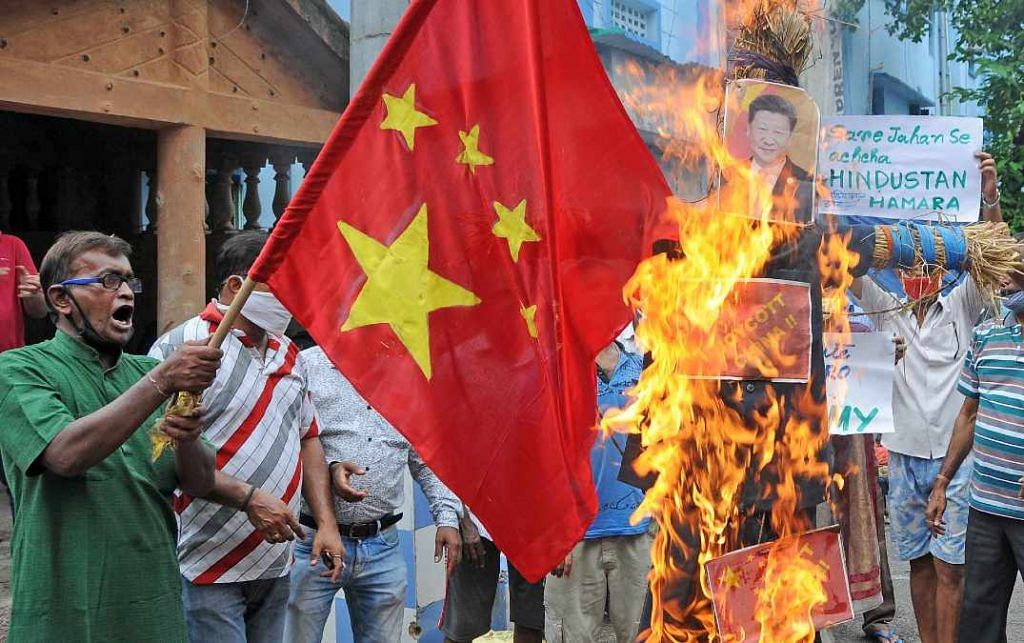New Delhi: The Chinese observation post destroyed on 15 June by the troops of Army’s 16 Bihar is back at exactly the same location despite an agreement between the two sides to pull back, defence sources confirmed to ThePrint.
The development was first reported by news agency ANI earlier Wednesday.
The removal of the post was the trigger of the clash between the two armies that killed 20 Indian soldiers last week. Meanwhile, tensions are also brewing in Depsang, where the Chinese are believed to have blocked Indian patrols from going to Patrol Points 11, 12 and 13, an indication that the Chinese have transgressed into this area too.
The Army has officially not reacted to queries raised on the issue.
Following an understanding between the two sides after the clash at Galwan Valley, the Indians had pulled back from the area, which is close to Patrol Point 14, around half-a-kilometre from the Line of Actual Control (LAC), sources said. The Chinese were also supposed to do the same.
However, during the next patrol, Indians observed that the Chinese observation post had come back at exactly the same point, the sources added.
The issue, the sources said, was discussed during the Corps Commander-level talks held between India and China on 22 June, where the two sides had agreed to pursue step-wise de-escalation in the area.
The Chinese have laid claim to the area and said that the post is on their territory, the sources added.
Reports of what appears to be a fresh provocation from China come on a day when the country’s foreign and defence ministries issued statements blaming Indians for the 15 June clash and asserting that Galwan Valley belonged to them.
Sources told ThePrint that the Chinese want the Indians to limit their patrol to the confluence of Shyok-Galwan river, about 5 km into the LAC.
“It is a long haul. There will be lots of grey areas at every level,” a source told ThePrint when asked whether the Chinese are going back on the terms agreed during talks.
Also Read: 14-day quarantine waived for Army, Navy, Air Force amid India-China row, but riders apply
Tensions continue
China’s continued aggression at Galwan Valley comes even as it raises challenges for Indian patrol teams in the Depsang Plains, which also lie along the western sector of the Line of Actual Control (LAC), especially near Patrol Points 11, 12 and 13.
Sources said India and China have both increased deployment in the Depsang Plains, an area located close to the strategic air base Daulat Beg Oldi.
Earlier Wednesday, fresh satellite images had raised concerns of increased Chinese troop build-up at both Galwan Valley and Depsang.
The satellite images of Galwan Valley, dated 22 June and put out by Twitter handle @detresfa_, which has been releasing images since the tensions began building in early May, show a massive build-up of China’s People’s Liberation Army troops since the 15 June clash.
Although the Army is yet to speak officially on the satellite images, sources had told ThePrint earlier that the camps visible are on the Chinese side of the Galwan Valley, close to the LAC.
However, later in the evening, when asked specifically about the return of the Chinese observation post, sources confirmed that it had indeed come up.
Asked about the situation at Depsang, the sources said the Chinese have deployed additional tanks and moved them slightly forward from their usual positions. But they are still away from the LAC, the sources added.
Even so, the sources said, soldiers of the Peoples Liberation Army have moved a few kilometres into what is locally known as the “bottleneck area” on the Indian side and are sitting at heights, creating a threatening situation for Indian soldiers at Patrol Points 11, 12 and 13.
In April 2013, Chinese troops had crossed into Indian territory and pitched tents for three weeks at Raki Nula, 30 km south of Daulat Beg Oldi, before they agreed to pull out.
Also Read: In Ladakh’s Leh, people are caught between coronavirus and border tensions with China
